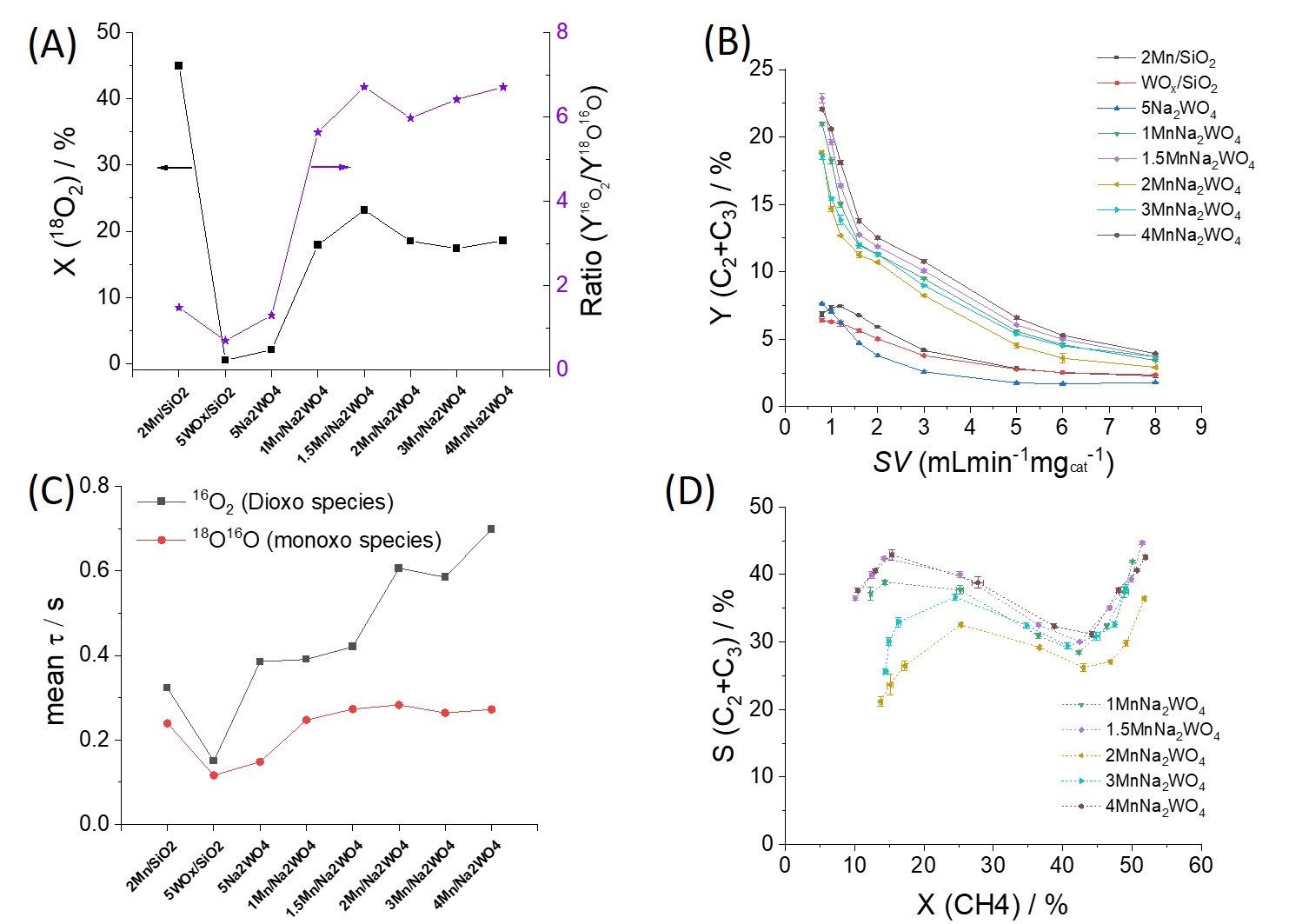(712d) Transient Kinetic Characterization Surface Oxygen Species to Understand Steady-State Performance of Oxidative Coupling of Methane
AIChE Annual Meeting
2020
2020 Virtual AIChE Annual Meeting
Catalysis and Reaction Engineering Division
Hydrocarbon Conversion I: C1 Reforming and Coupling
Tuesday, November 17, 2020 - 8:30am to 8:45am
We performed pump/probe experiments over Mn/Na2WO4/SiO2 catalyst system between 16O2 and 18O2 at 700 ℃. Based on the kinetic analysis, monoxo species were suggested as the main oxygen species on Mn site. 2%Mn/SiO2 showed the highest oxygen activation ability while C2+ yield was less than 8%, which suggested that monoxo species was not active for OCM performance. The poor OCM performance of Na2WO4/SiO2 was due to the low gas-phase oxygen activation.
Dioxo species were indicated as the main oxygen species in the Mn and W complex system based on the kinetic analysis. Both 1.5%Mn and 4%Mn over Na2WO4/SiO2 showed best OCM performance with the highest ratio of Y(16O2)/Y(18O16O). The mean desorption time of dioxo species was longer than the monoxo species. These experiments implied that the dioxo species played determining roles in enhancing OCM performance and the monoxo species may act as unselective oxygen. An optimum Mn loading for C2 yield is correlated to an optimal surface residence time and concentration of dioxo and monoxo species. These transient kinetic experiments provide a new understanding for OCM catalyst operation at industrial conditions.
[1] Kim, I., et al., Molecular Catalysis, 2017. 435: 13-23.
[2] Kondratenko, E.V. and J. Pérez-Ramírez, Catalysis today, 2007. 119(1-4):243-246.
